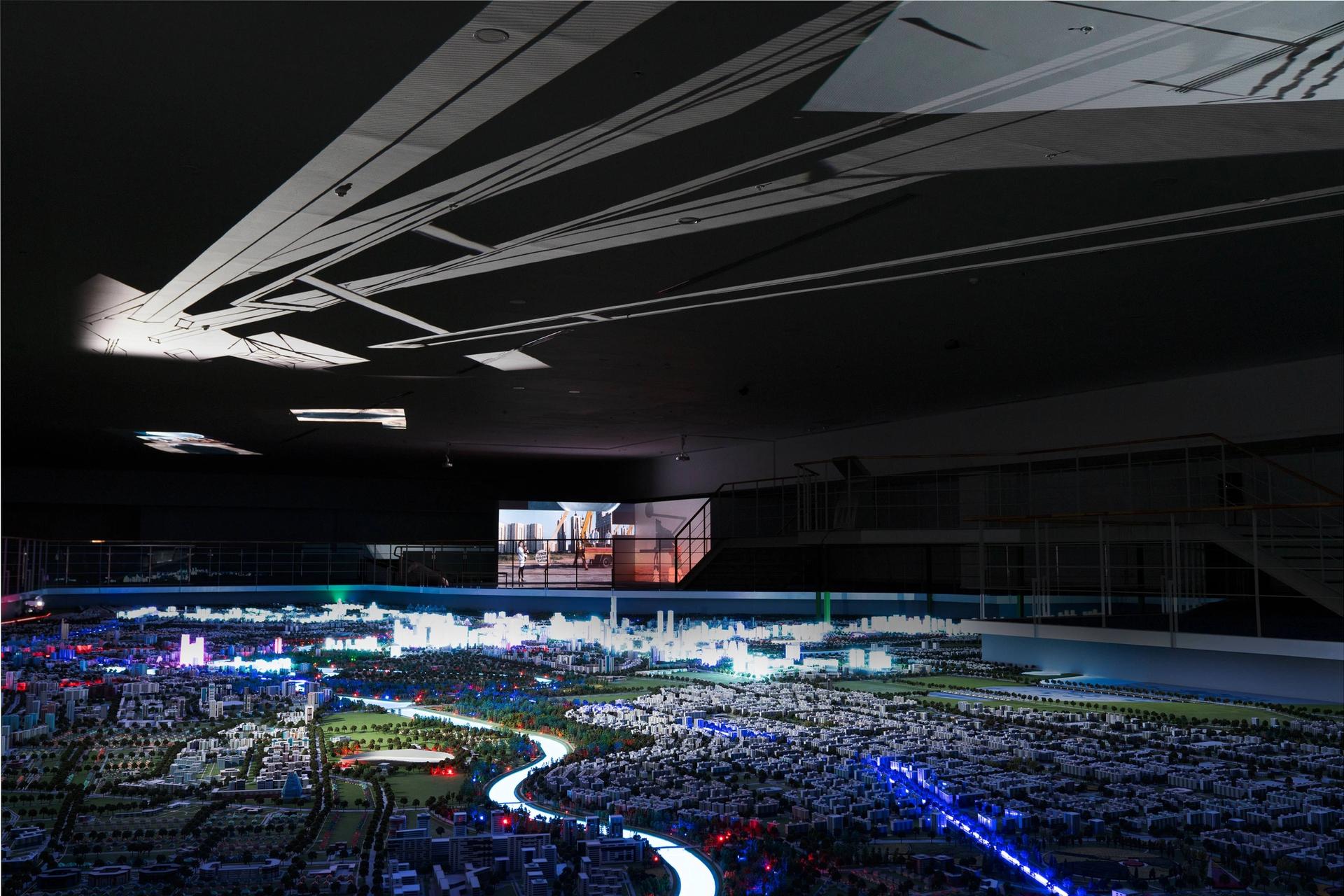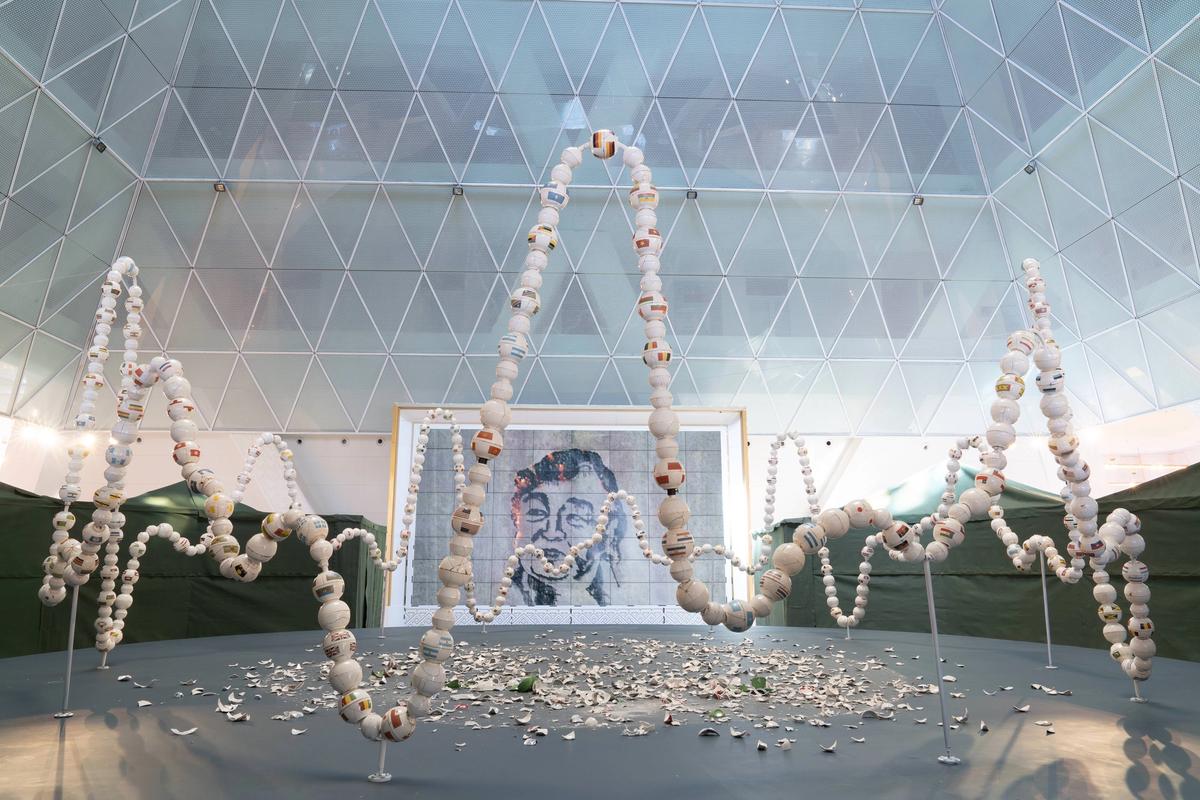Kazakhstan's first international art exhibition in its recently renamed capital, Nur-Sultan, reflects a desire for culture in a rapidly changing city. Racing the Galaxy, curated by the French curator Jérôme Sans and Kazakh curator Dina Baitassova, brings together 20 international and Kazakh artists, including Michelangelo Pistoletto, Ange Leccia, Mircea Cantor, Almagul Menlibayeva and Askhat Akhmediyarov.
Held in the Norman Foster-designed, pyramidal Palace of Peace and Reconciliation and the Palace of Independence, it represents an important milestone for the country's cultural scene given that Kazakhstan cancelled its first-time participation in the Venice Biennale this year.
“There's a lot of new architecture here but no soul and art is something that can enable people to appropriate the buildings on a human scale,” says Baitassova, who co-founded the International Art Development Association (IADA), a Paris-based, non-profit organisation that promotes Kazakh and Central Asian artists abroad.
Since returning to Kazakhstan three years ago after 11 years in Paris, Baitassova has focused on supporting the regional art scene. She set up TSE Art Destination—an art gallery, educational centre and "experimental laboratory"—in the capital, and organised the Astana Art Show (in 2018, which featured 45 local and regional artists. The idea for an exhibition more international in scope emerged after Baitassova met Sans five years ago.
“It often interests me to invent new models of exhibiting contemporary art in unusual places, as well as being open to discovering new artistic scenes,” Sans says, adding that Kazakhstan's population is an exceptional mix of different cultures, "especially nomadic ones—and in this sense Kazakhstan represents a metaphor of the globalised world but also a place where everything can be reinvented”.
Indeed, many of the artists featured in the exhibition are emblematic of a global diaspora of creatives. Cantor, Wang Du, Joël Andrianomearisoa and Babi Badalov are from Romania, China, Madagascar and Azerbaijan respectively but based in Paris; Mentalklinik, comprised of Yasemin Baydar and Birol Demir, hail from Turkey but are partly based in Brussels; Menlibayeva and Gulnur Mukazhanova are from Kazakhstan but based in Berlin; Aziza Shadenova is from Uzbekistan but based in London. According to the curators, this diverse roster of artists evokes the nomadic history of landlocked, oil-rich Kazakhstan and how its cultural heterogeneity was augmented by people being displaced here from other former Soviet countries.

Almagul Menlibayev's Astana Departure (2016-18) © Janaarkbek Amankulov / Saparlas
“This exhibition can be a model for all the other Central Asian countries but Kazakhstan needs to build an artists' community with education and workshops and involve artists in showing that art can help culture grow,” says Cantor, who involved 12 local young women found via social media to make DNA Kiss (2008-2019). The piece is composed of 12 lipstick wall drawings—one for each Zodiac sign—of repeated sequences of the golden ratio. On the opposite wall, Seven Colors, Seven Rainbows (2019), a mural depicting two intersecting rainbows realised with Cantor's fingerprints and reminiscent of barbed wire security fences, reminds local visitors of the lines inside a yurt, according to the artist.
To be sure, Kazakhstan's history, politics and geography are the subject of several works within the exhibition. Menlibayeva's multi-screen video Astana Departure (2016-2018), combining filming from Kazakhstan's Tokamak thermonuclear testing device with animation offers a critique of the construction of the Astana—the former name of Nur-Sultan—on a steppe. This is exhibited next to an illuminated urban plan, made in 1999 by architects imagining how the city should look by 2030.
“It's a city of the future but there's no harmony between it and the people,” Menlibayeva says. The capital's name was contentiously changed from Astana to Nur-Sultan in March by the new president Kassym-Jomart Tokayev to honour his predecessor Nursultan Nazarbayev, who resigned after leading the country since its independence from the Soviet Union in 1991.
Soviet history is present throughout the show, too. Elsewhere, Shadenova's fabric sculptures with grieving eyes, allude to the drying out of the Aral Sea following Soviet agricultural programmes and “the erosion of Kazakhstan's ethnic identity because of how it became Soviet in a way”, she says. Meanwhile, Badalov's mural, Culture is Future–Future is Culture (2019), features linguistic, geopolitical puns such as Facebookstan, Architekturistan and Piramidstan.
Hastily arranged in the six months following since Kazakhstan withdrew from the 2019 Venice Biennale, the exhibition has had a few hiccups. Carlos Cruz-Diez's cinetic installation was planned to be on the zebra crossing between the Palace of Peace and Reconciliation and the Palace of Independence but after opposition from the transport ministry, his ephemeral Induction Chromatique Walkway (2019)was realised on the courtyard of the nearby National Museum of the Republic of Kazakhstan. Paintings from Wang Yuyang's Moon Serie (2014) failed to arrive in time for the opening.
- Racing the Galaxy, Palace of Peace and Reconciliation and Palace of Independence, Nur-Sultan, until 30 August


